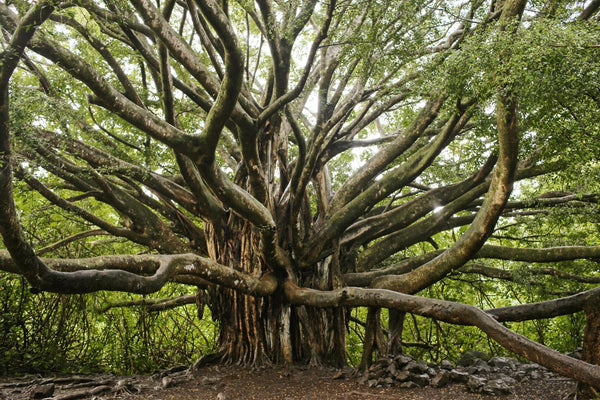Celebrating Mother’s Day in the forest
Mother’s Day is just around the corner and I think we can all agree that mothers are pretty amazing. After all, they bring us into this world (which is no small feat), nurture us, guide us, and support us during every stage of our lives. Through thick and thin, they’re there for us to lean on, freely sharing their time and love. And in the hustle and bustle of our busy lives, we can sometimes lose sight of that. That’s why Mother’s Day is important and why Mother’s Day 2023 is the perfect opportunity to let your mom know how loved and appreciated she is by planting a tree for her!
And in that spirit of appreciation, let’s expand our notion of “mother” and turn our gaze to another nurturing, supportive, and often under appreciated presence: Mother Trees. According to the Mother Tree Project, headed by groundbreaking researcher Suzanne Simard, “Mother Trees are large trees within a forest that act as centralized hubs, supporting communication and nutrient exchange amongst trees.”

These massive ancients are dubbed “Mother Trees” because they recognize kin, supply resources, share wisdom, sound alarms, support networks of hundreds of trees, foster deep connections and alliances, and pass their legacies down to future generations. Sound familiar? That’s because it is. As strange as it may sound, we have more in common with trees than we think.
amazing things Mother Trees do:
- Use their deep roots to draw up water and share it with shallow-rooted seedlings
- Detect the distress signals of neighboring trees and respond by sending them nutrients,
- Reduce their root competition to make elbow room for their “kids”
- Pump sugar and other lifesaving resources like carbon, nitrogen and phosphorous into the roots of young saplings
- Infect saplings with mycorrhizal fungi, pulling them into the supportive embrace of the wood wide web, where life-saving help is available
And speaking of fungi,it’s ubiquitous: one teaspoon of forest soil contains several miles of fungal filaments, coating every particle of soil and working its way into tiny crevices that tree roots can’t reach. With its help, Mother Trees are able to support entire forests, serving as “hubs” in the interconnected forest web of life.
When Mother Trees are injured, dying, or in their twilight years, they deliberately pass their resources on to their “children”. While science hasn’t determined exactly how they’re able to recognize their kin, the implications are clear: by offering support, Mother Trees ensure that their genetic line will run unimpeded. But Mother Trees don’t just support their own immediate families — or even their own species!

Diversity, community, and connection are vital to forest health
Interspecies alliances are common — and necessary — in the face of threats like insect colonization, tree diseases, deforestation, and climate-related disturbances like droughts and wildfires. Relationships like those between conifers and deciduous species like Birch and Douglas fir are a perfect example of this. When the Birch is leafed out, it can out shade Douglas fir, but once it loses its leaves, fir takes advantage of the extra sunlight. That might seem like proof of competition, not cooperation, but underneath the ground, these old friends pass nutrients back and forth throughout the year, sharing the bounty of their seasonal advantages.
In drier conditions, Mother Trees provide their more fragile neighbors with essential carbon, water and nutrients to keep them alive. Their presence increases seedling survival by as much as 400%, and thanks to the alliances they foster, entire forests are stronger and more resilient against threats big and small. Case in point: deciduous trees have broader leaves that hold more water, contain less resin and are less flammable than conifers. As a result, their presence in mixed evergreen forests helps to lower the risk of wildfires.
But if Darwin is to be believed, we’re all working against each other in a selfish, individualistic drive to win the race against time, right? And within traditional forestry, that theory has established deep roots, affecting how we view trees — and by extension, how we manage them. While it’s certainly true that trees compete, it’s also true that they work together, forming deep connections and intricate networks. They lean on each other, sometimes literally, for survival and band together against threats big and small.

what can we learn from mother trees?
Mother Trees remind us of our better nature. They prove that true strength is reflected in our ability to help each other, and that we’re at our best when our communities are healthy, our connections strong, and our resources equitably distributed. They remind us to share when we have more than we need, and to give a helping hand to those that are struggling. Just like our own mothers, from root to sky, they have a lifetime of wisdom and inspiration to share.
Want to show your appreciation for all the things mothers do for us? Plant a tree for your mom today!
